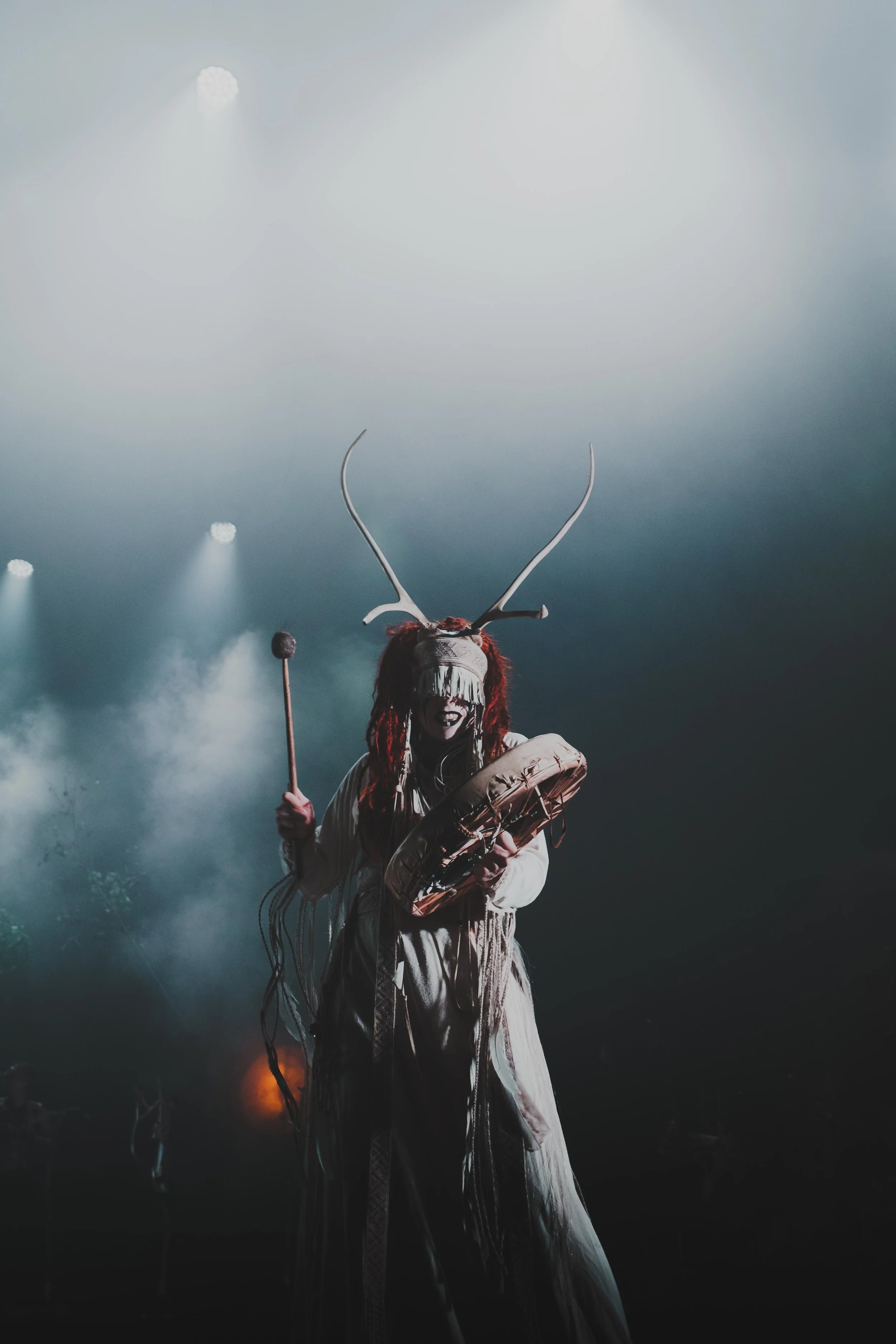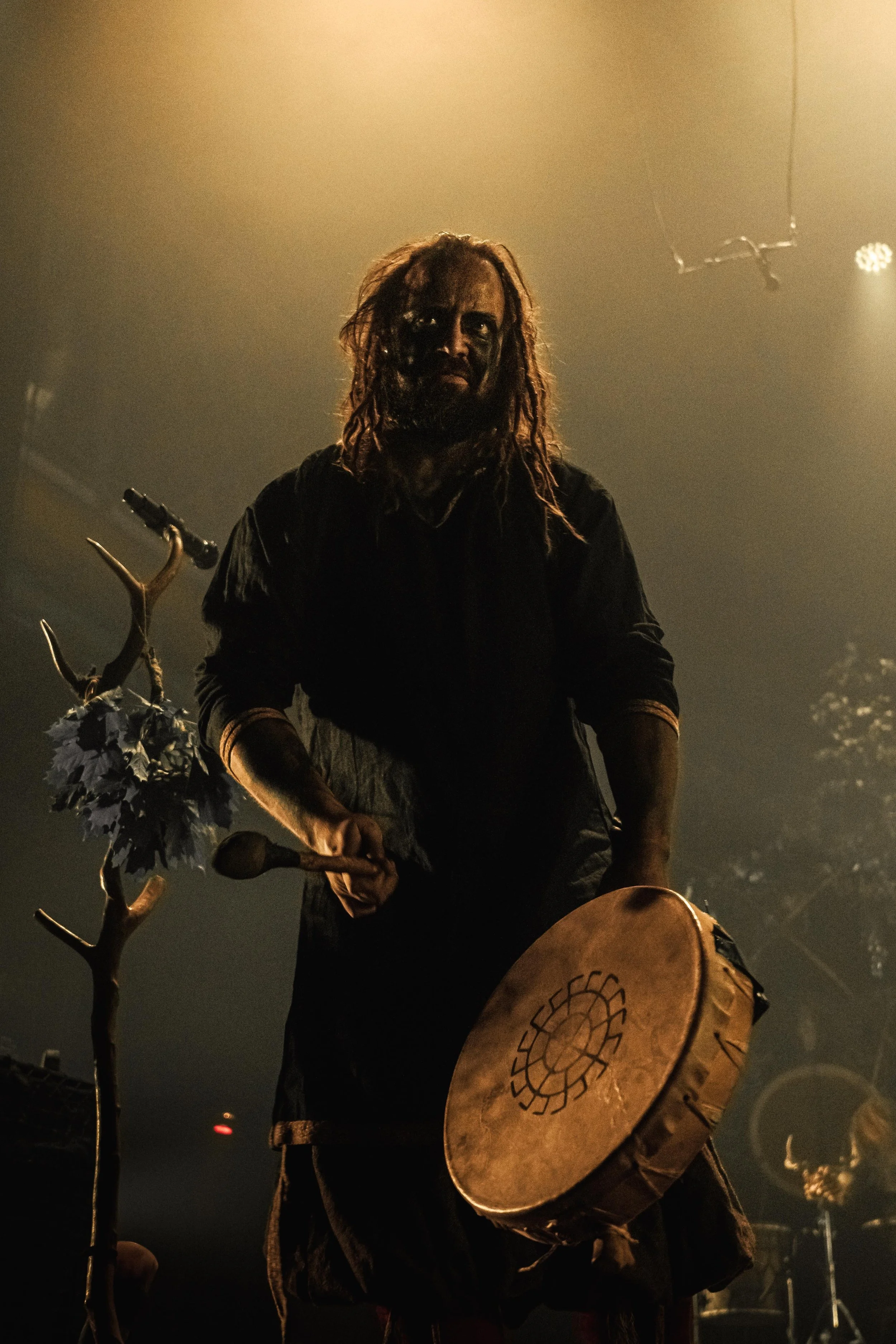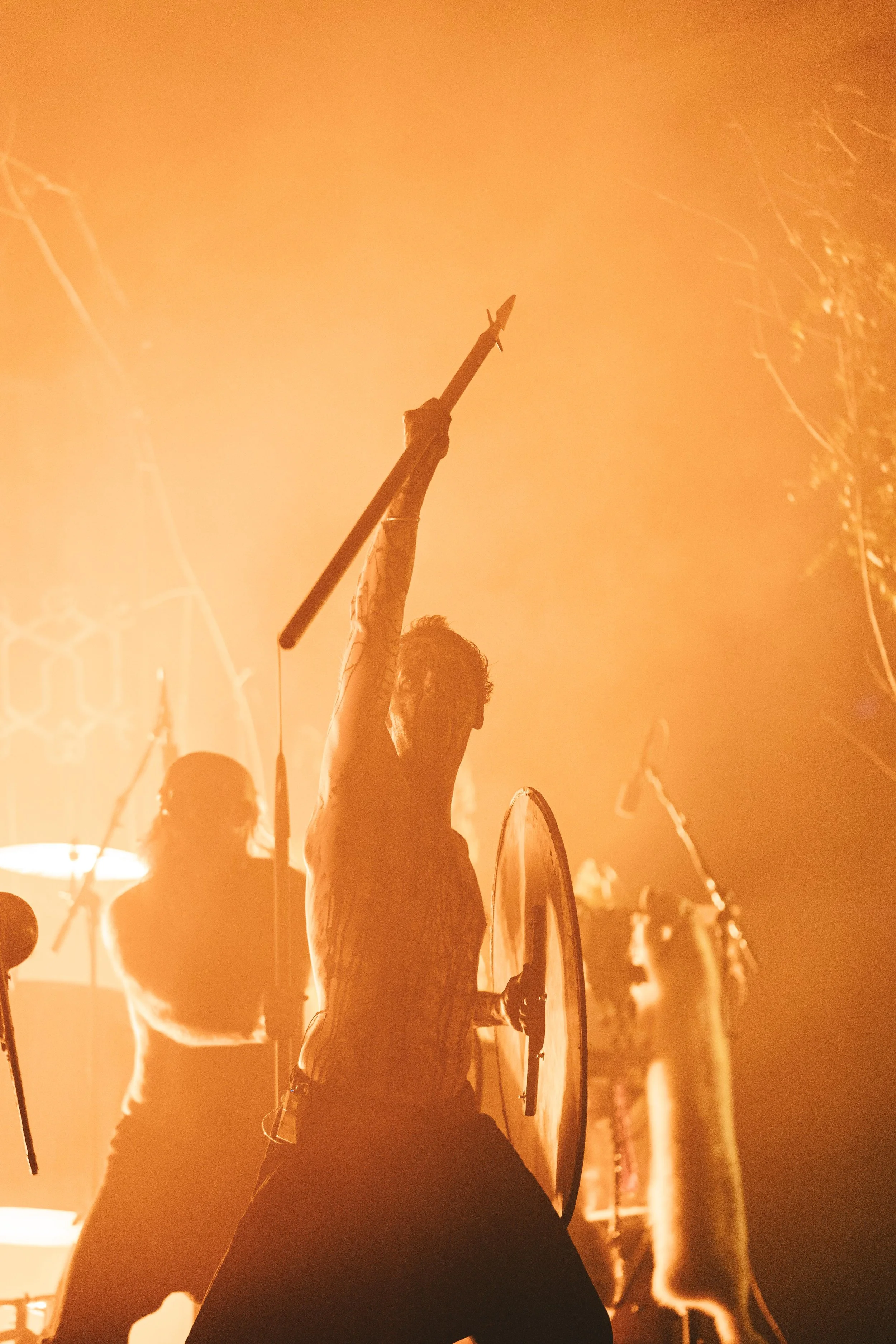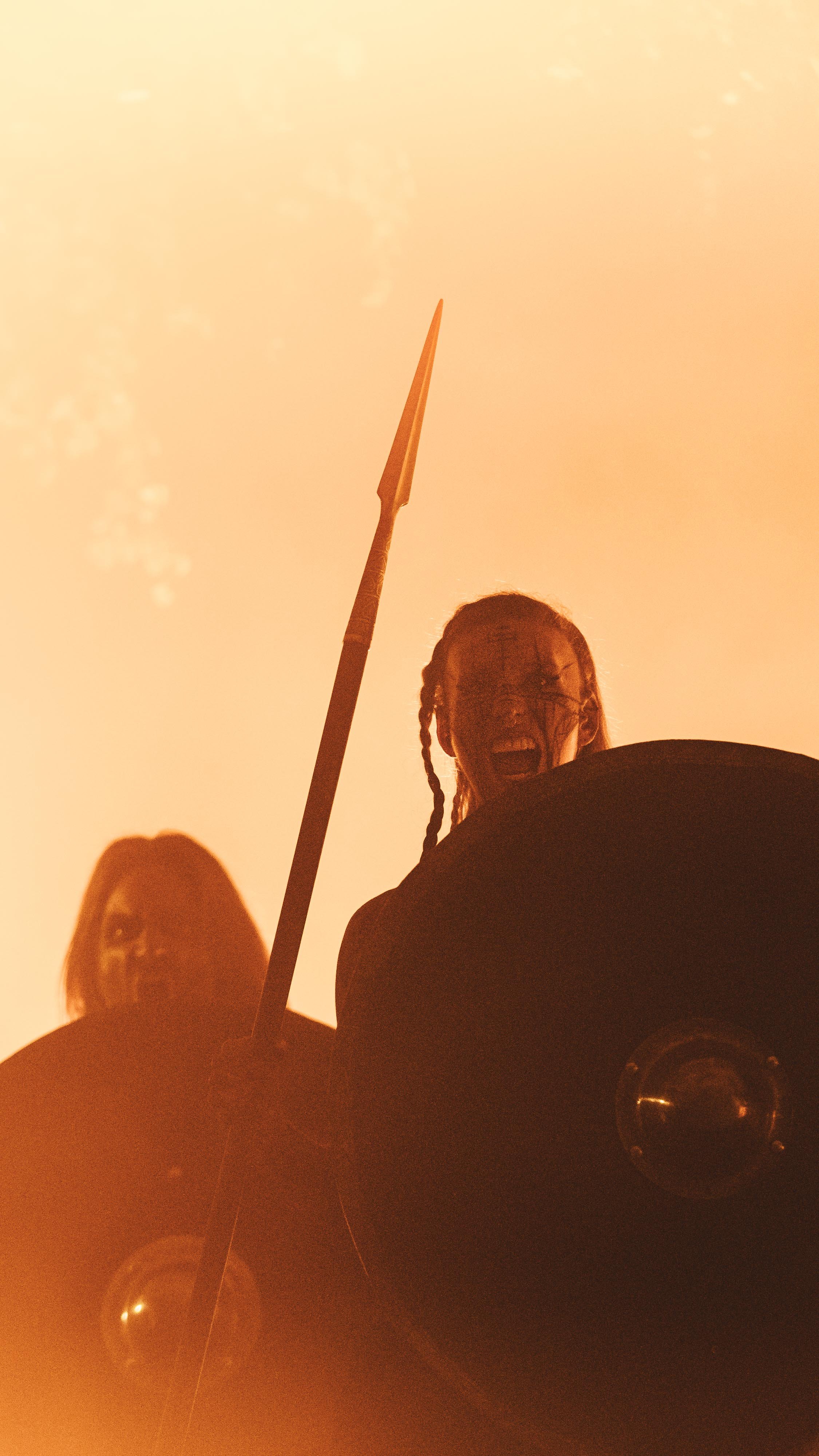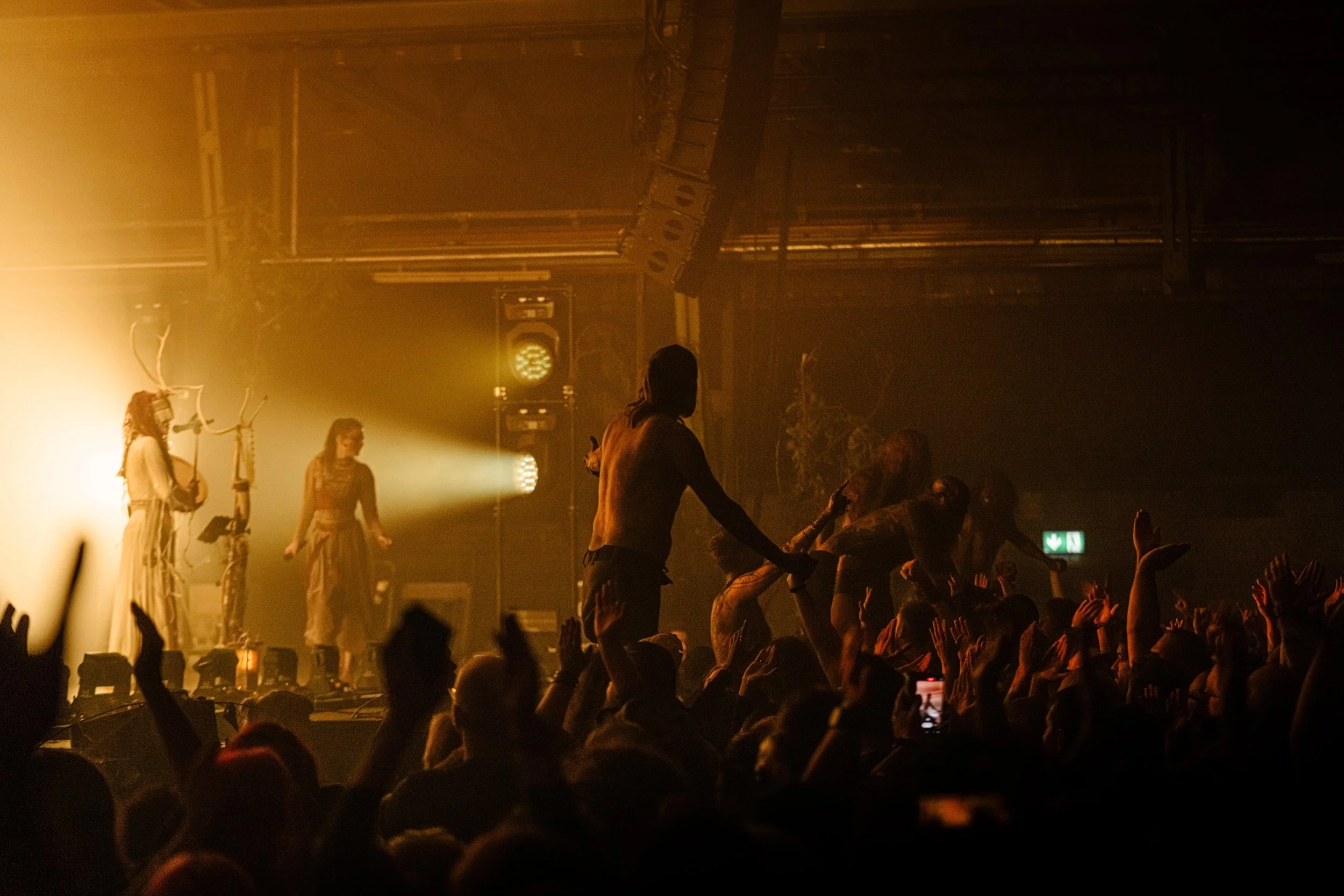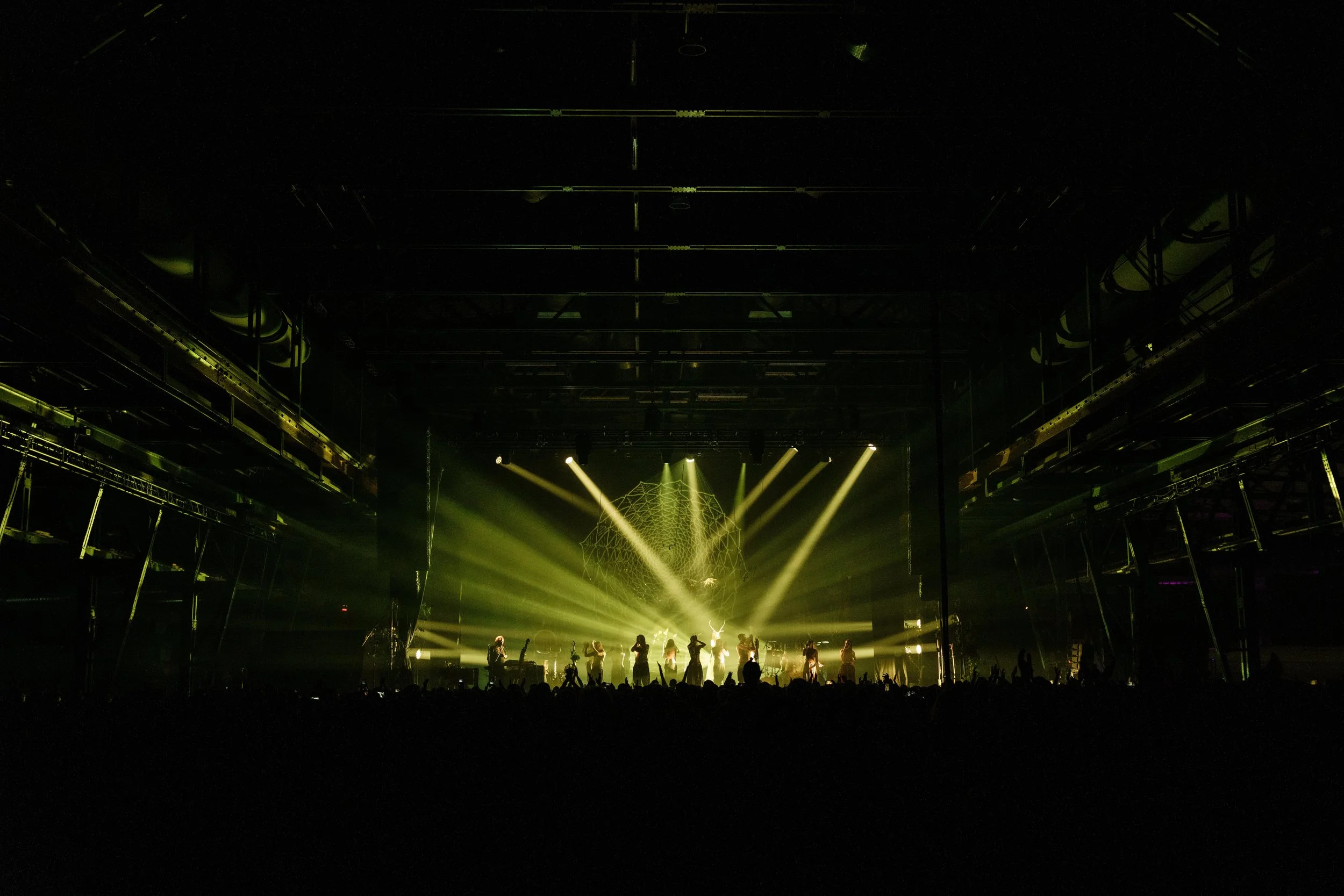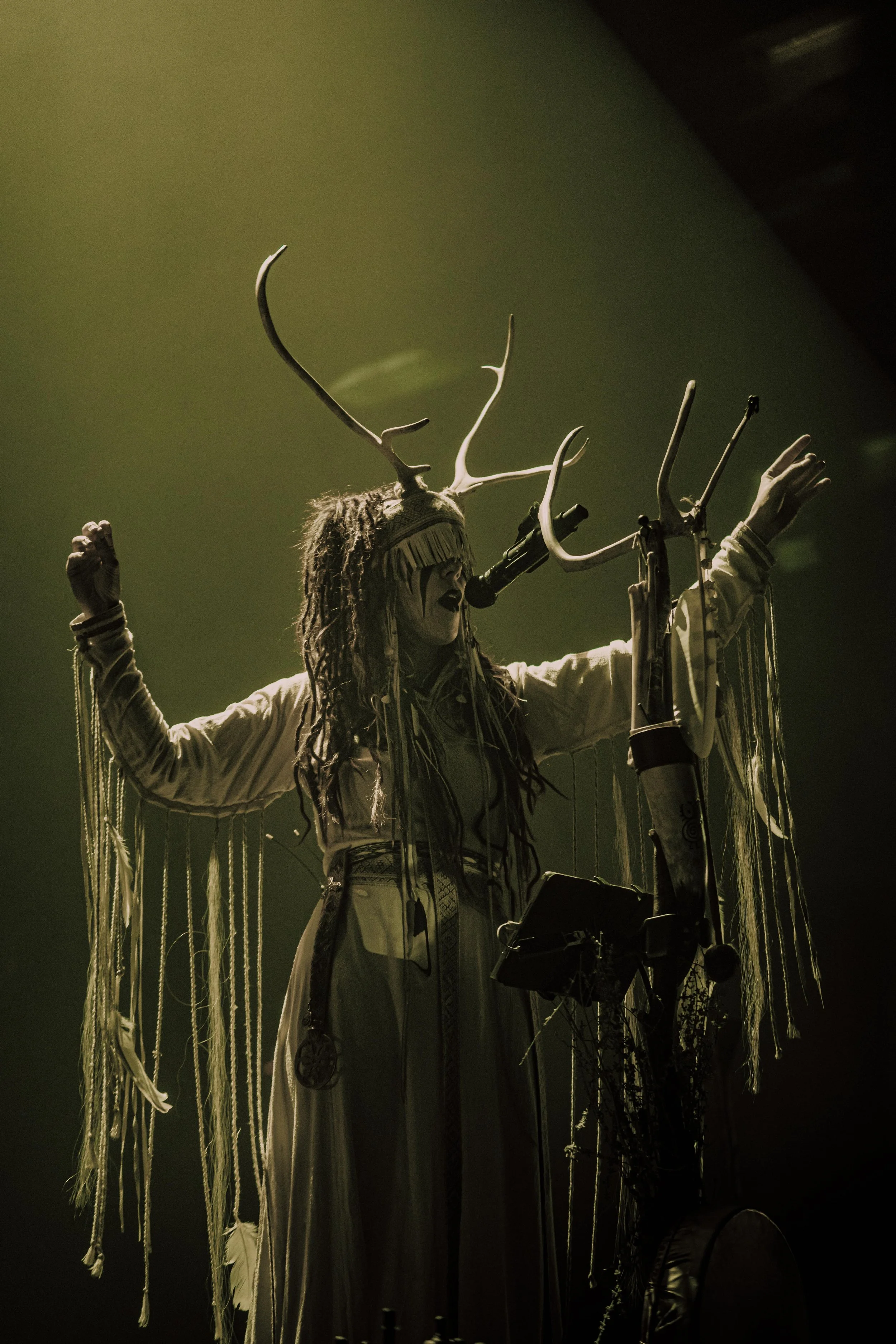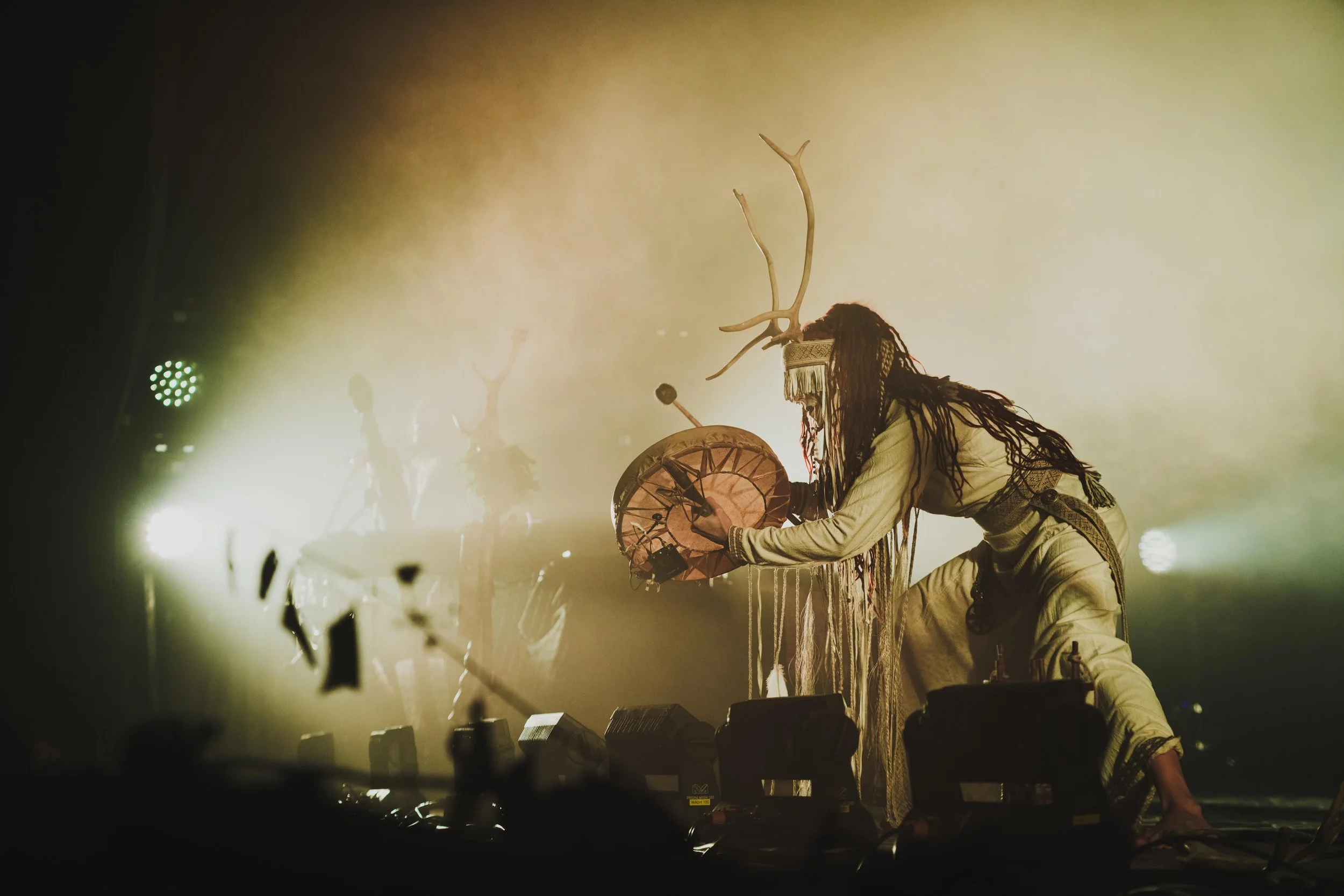Amplified History: Heilung Stirs the Senses at Zenith Kulturhalle
Written on a volunteer basis for MUCBOOK with a sponsored photography pass (read the publication, edited and translated to German, here)
13 October 2024
Entering the dark concert hall in Zenith Kulturhalle, the soft murmur of a forest gently falls from the speakers and over the gathering crowd escaping the cold early autumn rains outside. Birdsong and whispers of wind waft through the rafters down to a stage left largely bereft of the amount of equipment or instruments one might expect to find at a concert whose performers sell out many of the venues they visit. Only the first third of the stage is visible for the opening act – the black metal group Zeal and Ardor – while the remainder slumbers behind a black curtain, acting almost as a veil between two worlds, a dark void rendering impossible any glimpse into an alternate time and space. At the corners and along the side of the stage are small trees. They, along with the crowd, are bathed in lights of a green hue more reminiscent of a ghastly vapor than that of a deep warm forest green that could complement the soundscapes and flora.
Such an otherworldly aura serves as a reminder to those in the mustering crowd that the experience to take place among them is as much of a spiritual or ritualistic performance as it is a musical concert.
The crowd is a fantastical amalgamation of characters. Upon a brief glance, one may mistake the apparent majority to be from a nearby Metallica or Grateful Dead concert, adorned in black shirts and hoodies, worn denim jeans, the musk of cigarettes clinging to long flowing hair on the men and women alike. However, a smattering of other appearances break the black sea and reveal other tribes. A towering, hulking man at least two meters tall brushes past. He is dressed in hide boots and some form of reproduction of Ancient Nordic or Viking garb brushes past, head shaved on the sides while a long-braided ponytail extends from the central strip of hair atop his head, and eyes blackened like ash. In the distance, two girls who could have just as easily arrived from a Renaissance Fair with their leather corsets and makeup of runic lines and symbols find a spot in the crowd. One of the other concert photographers is herself dressed in hide footwear and a tunic, with a long ponytail draping from an otherwise shaved head.
It is hard to tell who has time traveled to the other’s world: an AC/DC crowd accidentally stumbling into an ancient ritual ground, or a handful of Germanic tribesmen looking to start a mosh pit amidst electric guitars after the Battle of Teutoburg Forest.
Once the opening act leaves the stage, the veil dividing the stage is drawn back, revealing the world it had been separating from the crowd. In the center-rear, a simple throne sits under an equally simple wooden frame and in front of a suspended drum, backlit at times to appear like a blood moon. Flanking this centerpiece at either rear corner are different sets of drums, rudimentary in appearance – unsurprising, once you learn that most if not all of them are made with real animal hides – but impressive in their stature and accoutrements. The modern sleek microphone stands used by the openers are replaced with stands outfitted to look like shafts of bone topped with antlers. A banner or two are hung in various places at the back, as are animal hides over the drum stands. Drinking horns are slung over the microphone stands for the main singers Kai Uwe Faust and Maria Franz.
Laid underneath it all, a huge circular carpet inscribed with the Elder Futhark runic alphabet forms the foundation on which the performance takes place. Apart from small screens attached to some of the microphone stands, the microphones themselves, the stage lighting, and a minimal audio mixing station for the third showrunner Christopher Juul at stage left, there is little in the way of modernity visible on stage.
Thus is the literal and figurative stage set for Heilung – German for “healing,”. Defying just about every conventional definition for a musical or theatrical performance – it is often described as an “experimental folk collective” – the group defines its own genre as “amplified history” mixing pagan shamanism with a smorgasbord of ancient and early medieval influences woven into a mesmerizing tapestry of music, storytelling, and performance. The founding members – Faust, Franz, and Juul – formed the group as a project of sorts to invoke atmospheres of the ancient, stressing the connection between humanity and nature in pursuit of using music in a ritualistic manner to create a “powerful, transformative experience.”
Each performance begins with Faust emerging from the dark backstage with a bowl and tree bough to smudge the stage and crowd with smoke. Upon completion, the rest of the performers join him in an opening ceremony, clasping hands in a circle above the runic rug on stage, and reciting the following:
“Remember, we are all brothers.
All people, beasts,
tree and stone and wind,
we all descend from the one great being
that was always there,
before people lived and named it,
before the first seed sprouted.”
From there, the show erupts into a staggering production, both visually and audibly. Faust’s guttural vocals span a range from reverberating throat singing to an almost hissed aggression. Franz, the lightest figure on stage clad in an ethereal white gown and headdress, complements the roaring of Faust and accompanying warriors with a tenor that is at times angelically cooed and at others rousingly cried out, seeming to invoke whatever gods may have been summoned into the ritual. Juul is stationed at stage left, jumping between the mixing panel, drums, a stringed instrument that I admittedly know nothing about, or leading the accompanying performers – referred to as warriors – in the Hakkerskaldyr chant with staff in hand.
Whether a heart-racing warrior’s incantation or a swaying recitation between Franz and her two accompanying female vocalists, Heilung’s live performance is mesmerizing. It grabs the eyes and ears and never lets monotony creep in. The ritual ebbs and flows, perfectly alternating the primal droning and stomping with slower breaths, grabbing and releasing you in a dance with the senses, and punctuating it with incredible lighting and stage production.
Regardless of your religious or cultural affiliation, conventional music taste, or affinity for history, you cannot help but feel drawn into what can only be described as a primal air of rhythm and ceremony. Even while busy behind the lens and constantly moving among the pit and the crowd, I found my feet and legs keeping time to the beat, and if I was walking, either a hand or my head took over until stationary again.
Listeners of their music will hear an eclectic variety of languages, from Modern German, English, and Danish to Old Norse, High and Old German, and even proto-Germanic. The lyrics and storylines found across their songs are inspired by, and often taken directly from, historic material, archaeological artifacts, and Germanic mythology. Hamrer Hippyer, a rhythmic trance-like incantation of a song, borrows verses from the Merseburg Charms, old medieval magic spells of unknown origins discovered in a 9th century manuscript in Germany. The stirring Anoana sews together inscriptions from bracteates, coins from late European antiquity through the three medieval periods, many of which are associated with Germanic mythology and paganism that were meant to grant protection to the holder.
Use and interpretation of historic and archaeological material might raise questions and even concerns from subject experts, academics, and researchers with healthy reason. Generally speaking, there is always a debate, hopefully civil, about historical interpretation between experts and non-experts. In an age of rampant disinformation which often utilizes ahistorical narratives or flat-out pseudohistory, it’s a healthy skepticism to hold.
Moreover, contemporary use of Viking and Ancient Norse imagery is unfortunately common among radical ideological groups, particularly fascist and neo-Nazi groups that conjure up some claim of “Aryan strength” alongside the warrior motifs and philosophy associated with this historical material.
So it’s understandable why some may be wary of a niche performative group clad in dark robes and antlers, or nothing but trousers and body paint claiming to make their own interpretations of history and artefacts while staging performers that at times wield reproductions of Iron Age spears in a shield wall.
Heilung seek to dispel those concerns – especially, at least, any that may stem from ideological worries – in clearly outlining their philosophy and intentions, as well as explicitly denouncing hate speech, racism, and white supremacy. Regarding “accurate” interpretation of incomplete or as-of-yet fully understood artefacts like the Merseburg Charms or bracteates, the group has made it clear that their intentions are not to perform historical or scientific analysis in their interpretations. In a 2022 interview with The Guardian, Juul iterated that they leave the scientific process to the experts, but “what we want to do is create an atmosphere” that connects modern audiences with an ancient atmosphere and feeling in an air Aristotle himself might have deemed worthy of aligning with thymos, or passionate spiritedness and connection to life beyond yourself.
Overall, the group emphasizes their intention to use modern performances and some technology to “amplify” history, connecting people to these mysteries while “[delivering] a humbling reminder” of humanity’s connection to their past. While their dress and songs are derived from entirely European historical material, they intertwine this emphasis on “connection to the past” with the pagan focus on connection to the natural world. Their uncomplicated methods of music, based largely around the drumming, chanting, and basic stringed instruments, and this emphasis on humanity’s connection to nature has garnered supporters of their philosophy from a wide variety of historic and cultural backgrounds, from Māori in New Zealand to Indigenous Americans in North America.
While their current tour is marked as their last one “for the foreseeable future,” they do have some dates marked across western Europe through 2025 after their Australia and New Zealand leg ends in November this year. If you find yourself within range of any of their performances, give it a go, especially if the venue is outdoors where they are most in their element. You won’t regret it.

